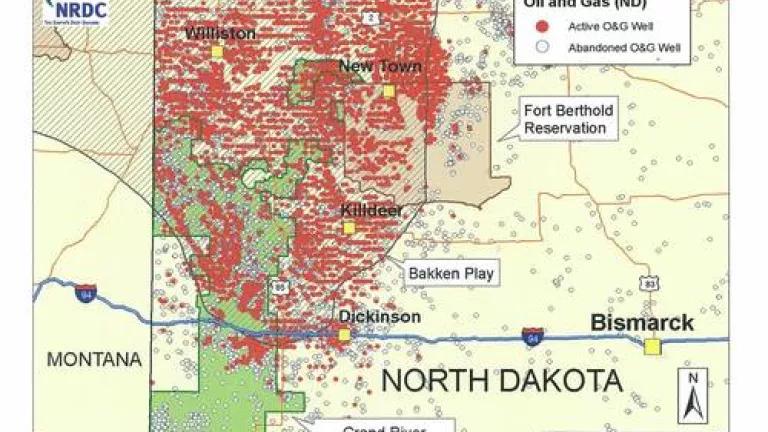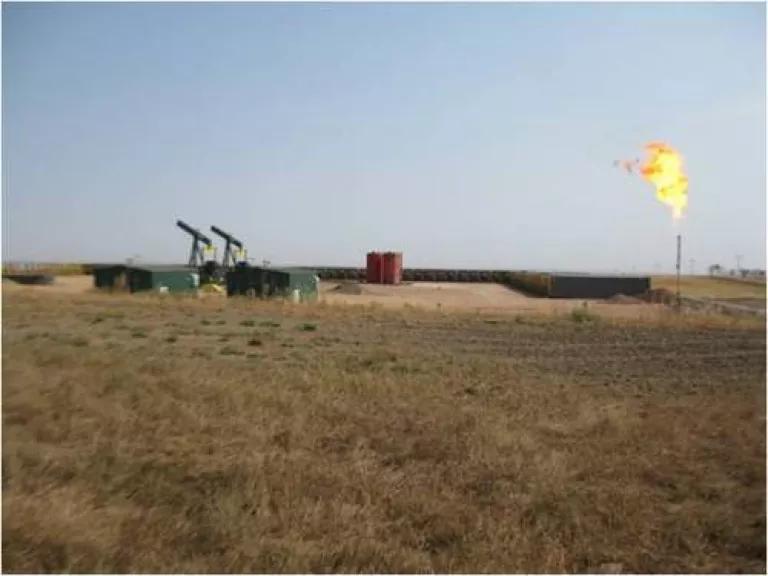
Brenda and Richard Jorgenson have farmed in the White Earth Valley of North Dakota for more than 30 years. They built a home in the valley’s sloping hillsides and planted crops around its native prairie grasses. They have weathered the rugged conditions of the Northern Plains because they love working the land, but now their way of life is threatened by a powerful new force: the Bakken oil boom.
A frack pad sits roughly 800 feet from the Jorgenson home, a pipeline is being dug through their ranchland, and a waste disposal facility is planned nearby. The Jorgensons and many neighbors oppose the projects, but energy companies come armed with leases, lawsuits, and threats of eminent domain. Local residents have little recourse.
Interior Secretary Sally Jewell visited North Dakota last week. She toured the oil patch and heard Governor Dalrymple’s request to “streamline” the permitting process for fracking on federal lands. I hope she also met with residents like the Jorgensons who are living on the frontlines of the fracking explosion—the ones who know that fracking has been linked to air pollution, water contamination and reduced property values in communities across the country.
These families have a stake in North Dakota’s past and its future, but their concerns aren’t being addressed, and now scarred and contaminated landscapes are stretching across the state’s wide horizons. The oil companies eventually move on, but residents are left to cope with the aftermath.
The scale of industrialization in North Dakota is nothing short of astonishing. In 2007, the Bakken Reserve included 457 wells and produced 7 million barrels of oil. By 2012, companies were drilling between 2,000 and 3,000 new wells a year, and production was up to 127 million barrels of oil annually. The North Dakota Oil and Gas Commissions predict that 35,000 to 40,000 new wells will be drilled and fractured in the region over the next two decades.
North Dakota has witnessed oil booms before, but fracking requires something new: enormous amounts of water. To frack their wells, companies use truckloads of water taken from the state’s aquifers, mix it with chemicals and sand, and then pump it into the earth at extremely high pressure. Each well may consume between 400 and 800 truckloads of water. One North Dakota county alone used 1 billion gallons of water to produce 100 millions of barrels of oil.
North Dakota is an arid place. It gets about 15 inches of rain a year, and many farmers, ranchers, towns and cities rely on groundwater reserves to supply their water. What will they do if fracking operations drain their aquifers? How will they afford to compete with deep-pocketed oil companies that drive up the cost of water?
Similar questions linger about other aspects of fracking in the Bakken: is the air pollution from wells being monitored? Why are companies allowed to burn off as much natural gas as they want—they consider it unprofitable to sell it at today’s natural gas prices—even though it releases dangerous carbon pollution into the atmosphere? And how will the state handle the long-term storage of millions of gallons of waste from fracked wells? These safety challenges have to be addressed now, before more damage is done.
The Bakken is a globally significant oil reserve, and all the major companies have laid their claim. They aren’t going to back away from this oil, but they can be held to higher standards. They can be called upon to operate in the safest way possible and keep out of the most sensitive places. After all, these companies have the resources and the technical ability to do better.

Yet right now, fracking is exempted from crucial provisions of the Safe Drinking Water Act, the Clean Air Act and other environmental regulations, leaving families and communities at risk. NRDC is urging the Bureau of Land Management to issue strong safeguards that protect people, farmlands, and communities from the grave threats of fracking. These standards would apply to federal lands as well as places where the government still owns mineral rights under private lands. Indeed 4.5 million acres of North Dakota has this so-called split estate arrangement.
NRDC is also asking Secretary Jewell to take a landscape-wide approach to energy development that carefully considers which places can support new drilling and which places should be set off limits. Right now scores of wells have been sunk across the beautiful national grasslands that surround the Theodore Roosevelt National Park. Surely a valued piece of our natural heritage should be protected from industrial development.
Finally, even as we put stronger safeguards in place, America must also invest in efficiency and renewable power so we build a modern energy system. The clean car standards issued last August, for instance, will double the mileage of today’s cars, cut our oil imports by one-third, and save consumers $1.7 trillion at the pump. North Dakota meanwhile can tap its abundant wind resources—ranked sixth in the nation by the American Wind Energy Association—to generate economic growth and clean energy.
This is the kind of energy investment that will allow North Dakota to support many uses of its landscape for generations to come–including for families like the Jorgensons.
